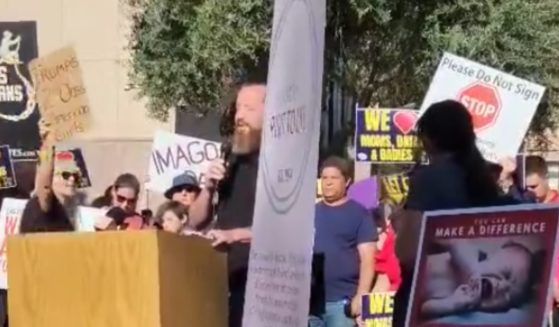The way you speak now was shaped by what your ancestors ate
WASHINGTON (AP) — The way most of us speak today is shaped in part by how long ago our ancestors gave up chewing tough, raw meat.
It’s widely known that languages evolve as societies develop and change, but the sounds we utter are also shaped, literally, by the placement of our jaw — and that is influenced by how we chew our food, researchers report Thursday in the journal Science.
Language study often focuses on cultural factors, “but our work shows that language is also a biological phenomenon — you can’t fully separate culture and biology,” said Balthasar Bickel, a linguist at the University of Zurich and co-author of the new study.
The researchers analyzed Stone Age and modern skulls and created simulations of how different jaw placements allow our mouths to make different sounds. They analyzed a database of roughly 2,000 languages — more than a quarter of languages in existence today — to identify which sounds were more and less frequently used, and where.
Languages spoken by groups with hunter-gatherer societies in their more recent past are far less likely to use consonants used by longtime farming societies, the study found.
“Our anatomy actually changed the types of sounds being incorporated into languages,” Noreen von Cramon-Taubadel, an evolutionary anthropologist at the University of Buffalo who was not involved in the study, wrote in an email.
Before societies cultivated crops and learned to cook food, early humans chewed tough raw meat — which was hard work on our jaws and teeth. Stone Age adult skulls don’t look like modern skulls. These older skulls have upper and lower teeth closing directly on top of each other — whereas today most people have some degree of overbite, with the front teeth extending in front of bottom teeth when the mouth is closed.
“If you are raised on softer foods, you don’t have the same kind of wear and tear on your bite that your ancestors had, so you keep an overbite,” said Bickel.
Eating softer foods not only sets the jaw in a different fashion, but also changes which sounds are easily pronounced. In particular, it becomes much easier to say “f” and “v,” which linguists call “labiodental” sounds.
(Try it. Put your upper and lower incisors — or “front teeth” — directly on top of each other and try say “favor.” It’s difficult.)
The researchers looked closely at 52 languages from what is called the Indo-European language group — including dialects spoken from Iceland to India — and charted how the “f” and “v” sounds appeared in a rising number of languages over time. As more societies developed agriculture and traded in raw meat for softer fare — whether it’s cooked meat and potatoes, or rice and stewed vegetables — these sounds became more common, the researchers found.
“New sounds get introduced into languages, and then are more widely adopted,” said Steven Moran, also a linguist at the University of Zurich and co-author of the paper.
The notion that agriculture shaped language was first suggested decades ago by American linguist Charles Hockett, but he did not attempt to prove it.
Elan Dresher, a linguist at the University of Toronto who was not involved in the study, commended testing Hockett’s theory, but said the research could be fine-tuned by looking at historical reconstructions of languages, rather than using language databases to make comparisons.
___
The Associated Press Health and Science Department receives support from the Howard Hughes Medical Institute’s Department of Science Education. The AP is solely responsible for all content.
The Western Journal has not reviewed this Associated Press story prior to publication. Therefore, it may contain editorial bias or may in some other way not meet our normal editorial standards. It is provided to our readers as a service from The Western Journal.
Truth and Accuracy
We are committed to truth and accuracy in all of our journalism. Read our editorial standards.












